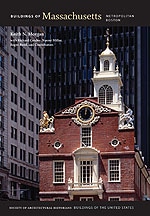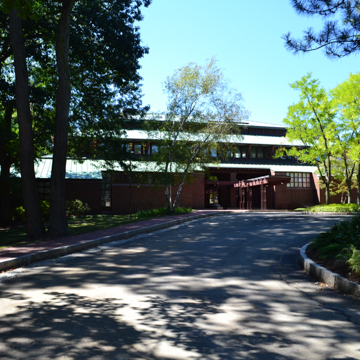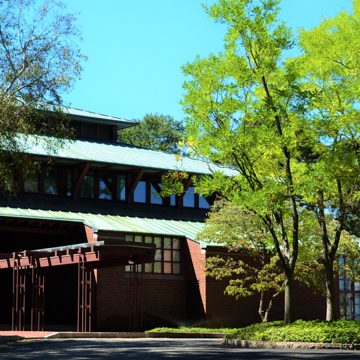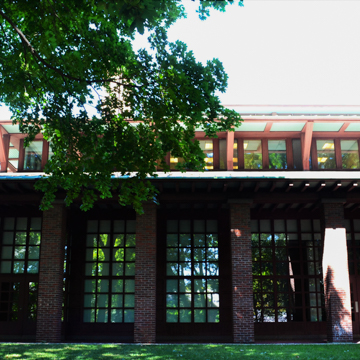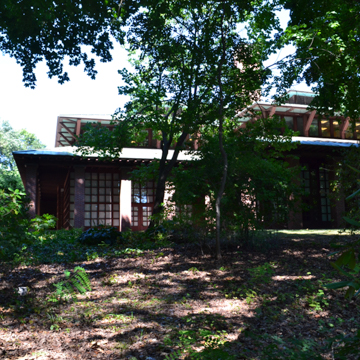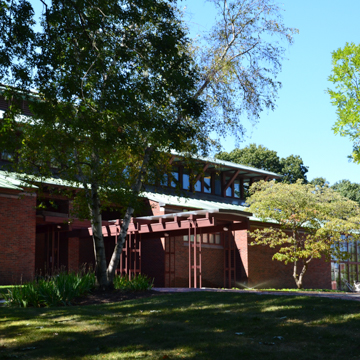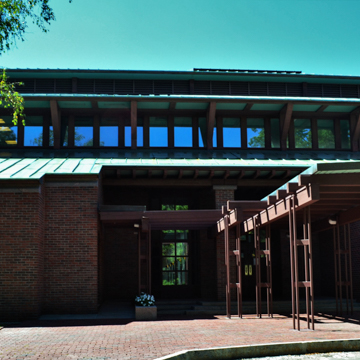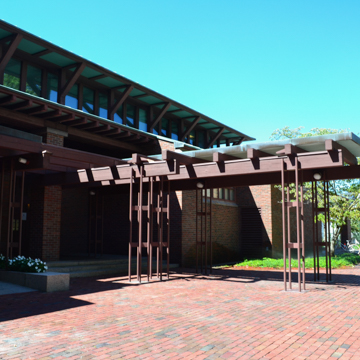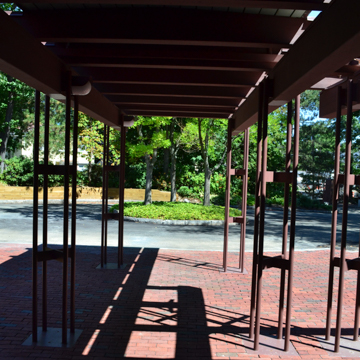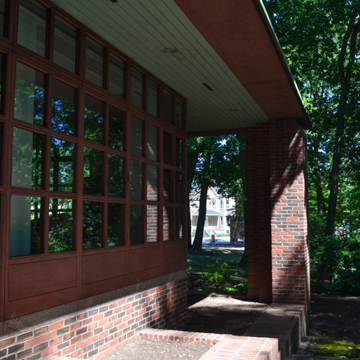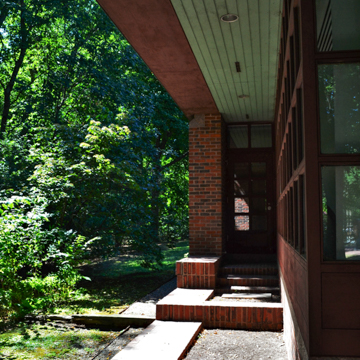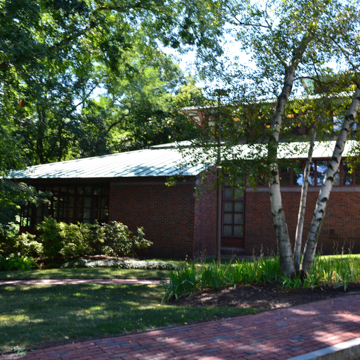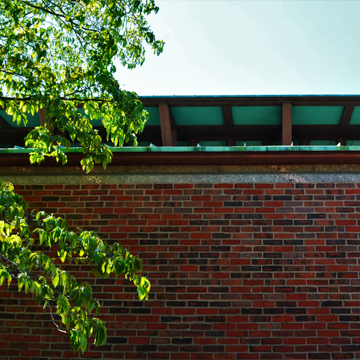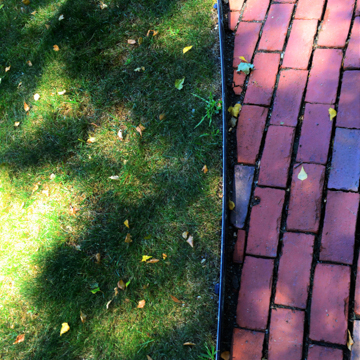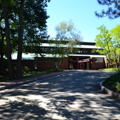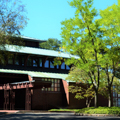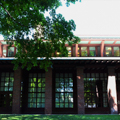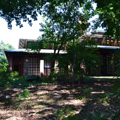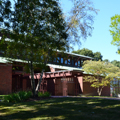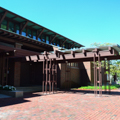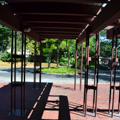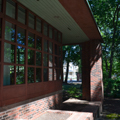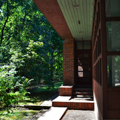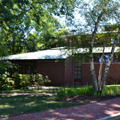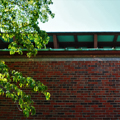Considering the renown of the architects' aesthetic employed in Boston's City Hall (GC16) and the nearby Boston Five Cents Savings Bank (now Borders; see BD13), the academy's new home came as a surprise. Following a program formulated by some members of the academy, the oldest scholarly institution in the United States, the architects created a building neither in the modern mode nor in harmony with local surroundings. The wooded setting lends a rustic atmosphere, reinforced by the brick piers on which a series of overhanging eaves bear traces of a variety of sources, namely, English Arts and Crafts, Frank Lloyd Wright, and Greene and Greene. The atrium, marked by a skylit terrace and a flight of stairs on one side, leads to conference rooms, reading areas, and administrative offices. Furnishings are rich, even lavish, and patrons seem to have thought about aspects of the Platonic academy of antiquity, that is, the creation of an atmosphere that fosters ongoing conversations among members and visitors. To this end, ample space is given to the auditorium and to meeting and dining areas.
You are here
American Academy of Arts and Sciences
1977–1981, Kallman, McKinnell and Wood; Carol Johnson and Associates, landscape. 136 Irving St.
If SAH Archipedia has been useful to you, please consider supporting it.
SAH Archipedia tells the story of the United States through its buildings, landscapes, and cities. This freely available resource empowers the public with authoritative knowledge that deepens their understanding and appreciation of the built environment. But the Society of Architectural Historians, which created SAH Archipedia with University of Virginia Press, needs your support to maintain the high-caliber research, writing, photography, cartography, editing, design, and programming that make SAH Archipedia a trusted online resource available to all who value the history of place, heritage tourism, and learning.














